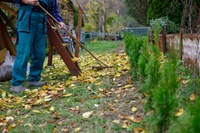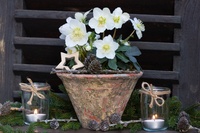
Time to protect plants for winter before it gets much colder, wetter and windier. There are many plants that are tough enough to make it through the winter months without any extra protection at all, but there are others which may need some help in order to survive the cold. There are various ways to look after your plants for the coming months, so they are ready to spring back to life when the temperatures rise again in a few months.
-
Moving Them Under Cover
There are many plants that can be moved to a place of protection, such as a cold frame, greenhouse or conservatory. Keep an eye on watering needs, especially pot plants, as they may still need watering. If you don't have anywhere under cover, you could make your own cold frame or purchase a mini greenhouse that can be installed in minutes and will help keep frosts off your plants.
-
Use Horticultural Fleece
This is a valuable fabric to always have on hand. Not only can it be used to wrap around or cover over plants during winter, but it can also be used as needed during late frosts in springtime. Depending on what you protect, it may need a couple of layers or be secured down on the ground. Even in the greenhouse, if you have tender plants and the temperature is very low, horticultural fleece can be used on plants, even undercover. Remember to remove it as needed!
-
Mulch, Mulch and Mulch
Well-rotted organic matter can work wonders for protecting your plants. Particularly good for perennials that die back over winter and brush into growth during spring. Also, for plants such as Dahlias, if you leave the tubers in the ground, applying a thick mulch will help to ensure they are protected from frosts.
-
Grouping Containers
If you have container plants, moving them to be sheltered and grouping them together can make it easier to cover them with horticultural fleece if needed and give them a little more protection from the frosts. This can be helpful if you have a sheltered corner of the garden or up against a wall.
-
Place Them on Pot Feet
Raising your pots and containers onto pot feet or bricks will help with drainage, especially in very wet weather. If your pots stand flush on concrete and the soil becomes impacted, this can stop good drainage and cause root rot.
Visit us in store for plant protection advice from our friendly staff.




